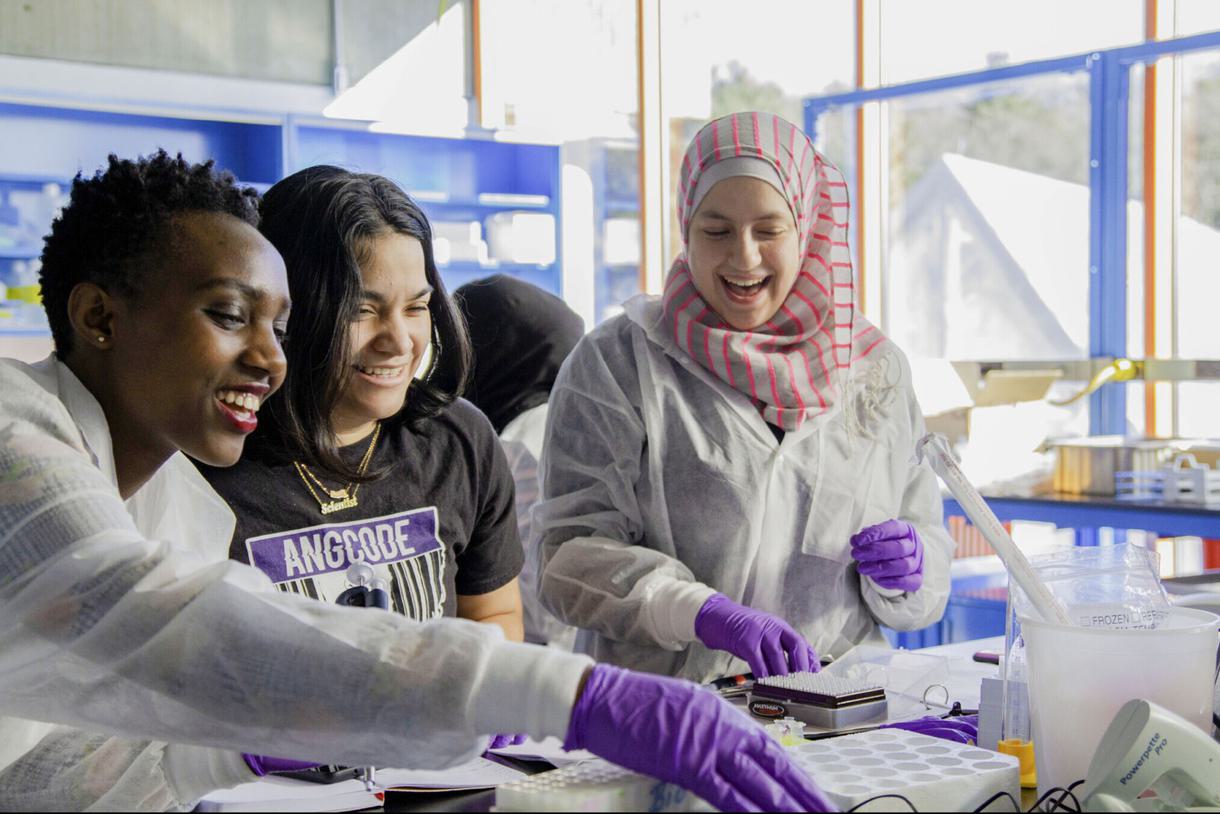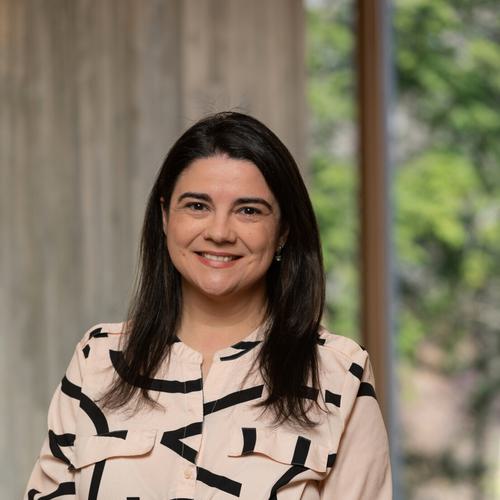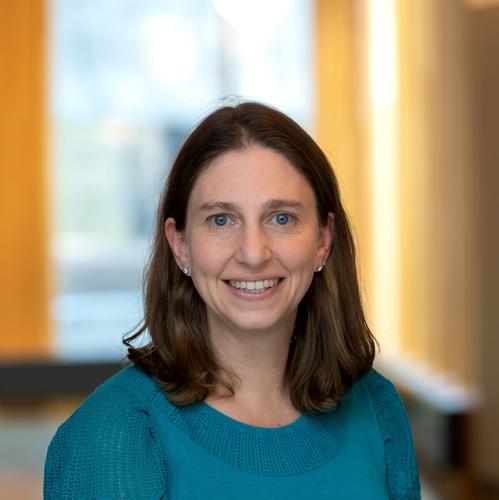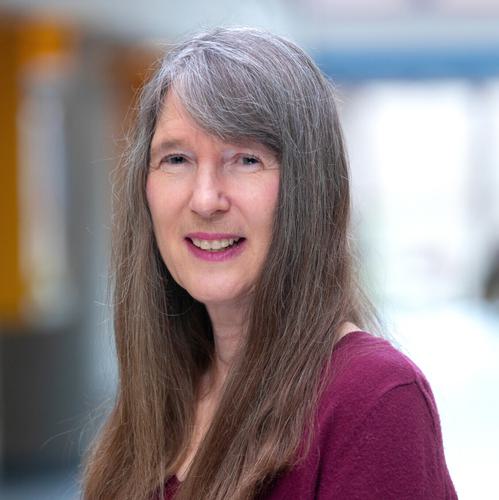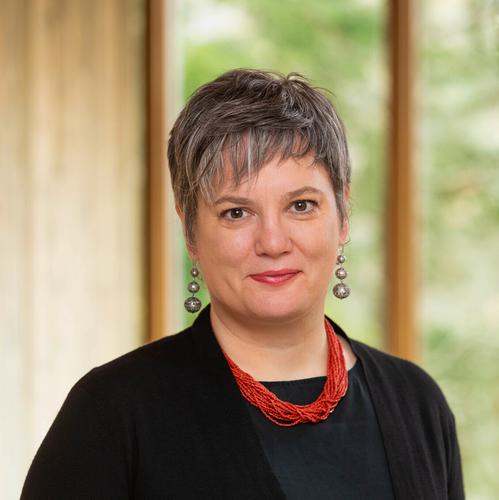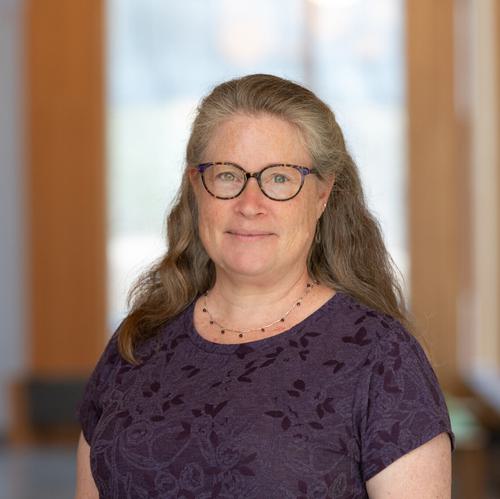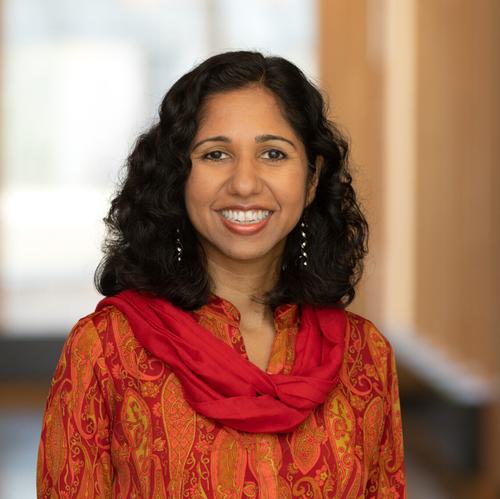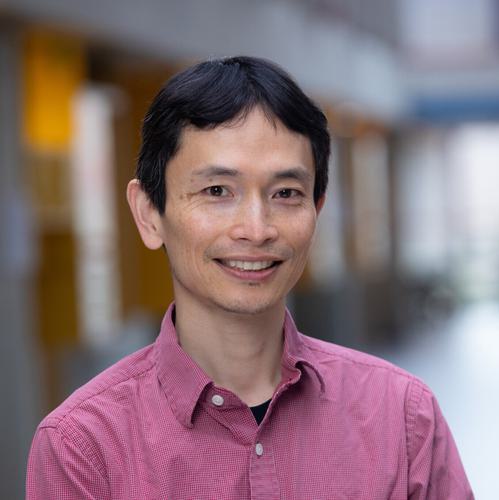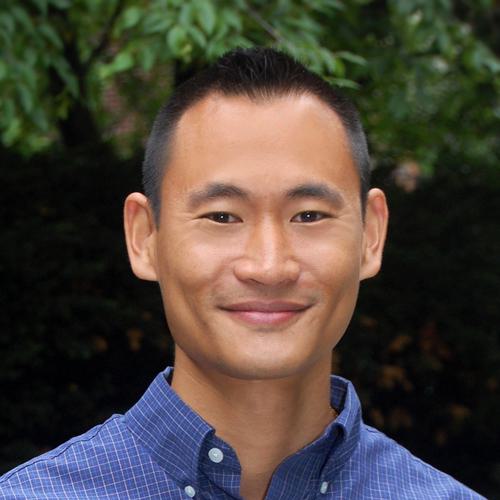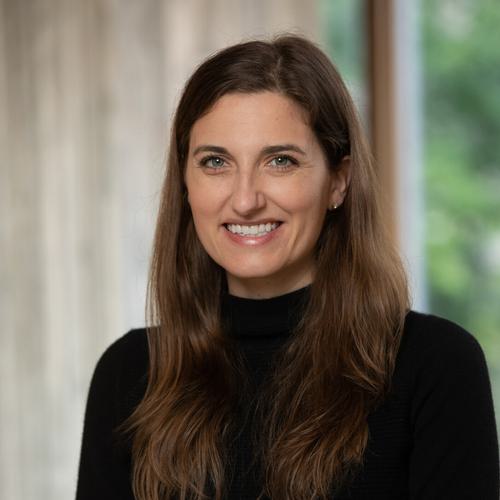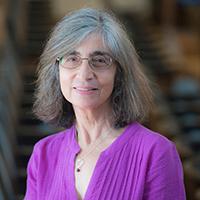Biochemistry
Academic Program Introduction
Biochemistry includes cell and molecular biology as well as other molecular aspects of the life sciences. It deals with the structure, function, and regulation of cellular components and biologically active molecules, such as proteins, carbohydrates, lipids, and nucleic acids. Expertise in biochemistry is central to breakthroughs in DNA technology, drug discovery and design, and molecular approaches to disease. Our students benefit from small classes, investigative lab experiences starting in introductory courses, and an inclusive community that values diversity, equity, and inclusion in learning.
Almost all biochemistry students conduct research at some point during their Wellesley career. Students have numerous choices for independent research in collaboration with faculty in biological sciences, chemistry, and other departments working in fields of molecular biosciences.
Learning goals
- Formulate biochemical hypotheses and test them utilizing well-designed experiments, critical evaluation of data, and appropriate statistical analyses.
- Apply, develop, and critically evaluate qualitative and quantitative models.
- Synthesize biological, chemical, physical, and mathematical knowledge to solve problems at the interfaces between these disciplines.
- Communicate sophisticated biochemical concepts to technical and general audiences orally and in writing.
- Retrieve, examine, analyze, interpret, and critique the primary biochemical literature.
- Use biochemistry to address societal, ethical, and public policy issues.
Programs of Study
Biochemistry major and minor
Students learn about central concepts and contemporary research at the interface of biology and chemistry. The program encompasses scientific content and its application to critical societal problems.
Places and spaces
Located in the Science Complex, we utilize chemistry and biology labs, multimodal classrooms, and a broad range of advanced instruments, many of which are used in graduate-level study. Photo credit: Dave Burk © SOM
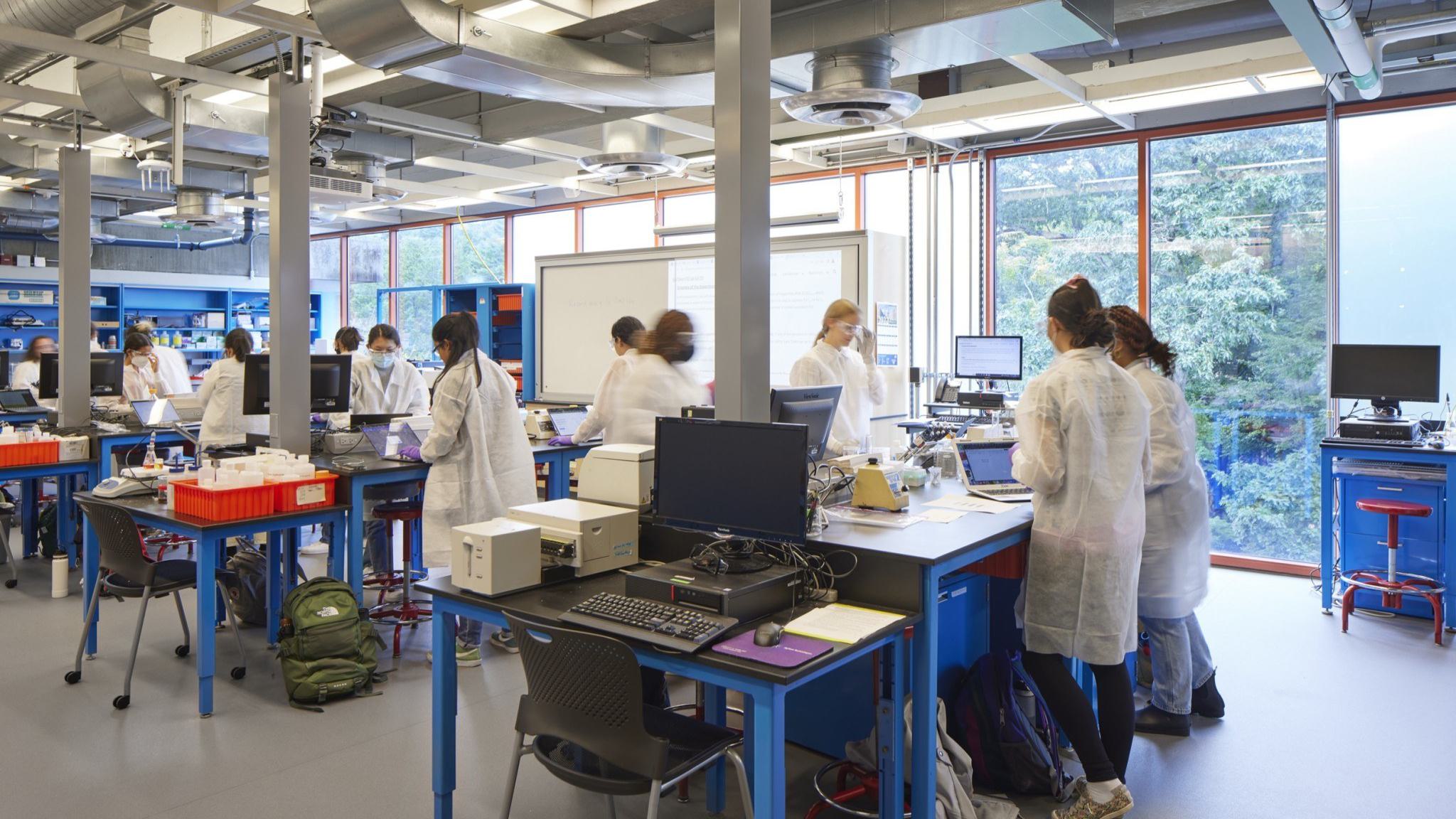
Research highlights
-
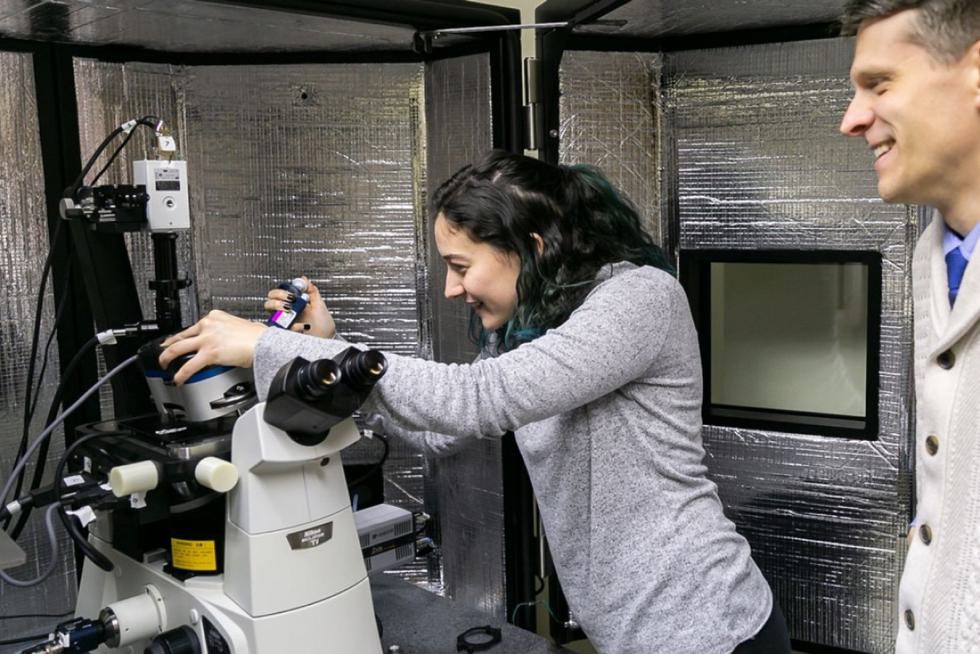
Ellie Gibbs ’22, Justine Hsu ’19, Kathryn Barth ’17, and Professor John W. Goss used atomic force microscopy to characterize the surface of fission yeast. Their study was published in Yeast in 2022.
-
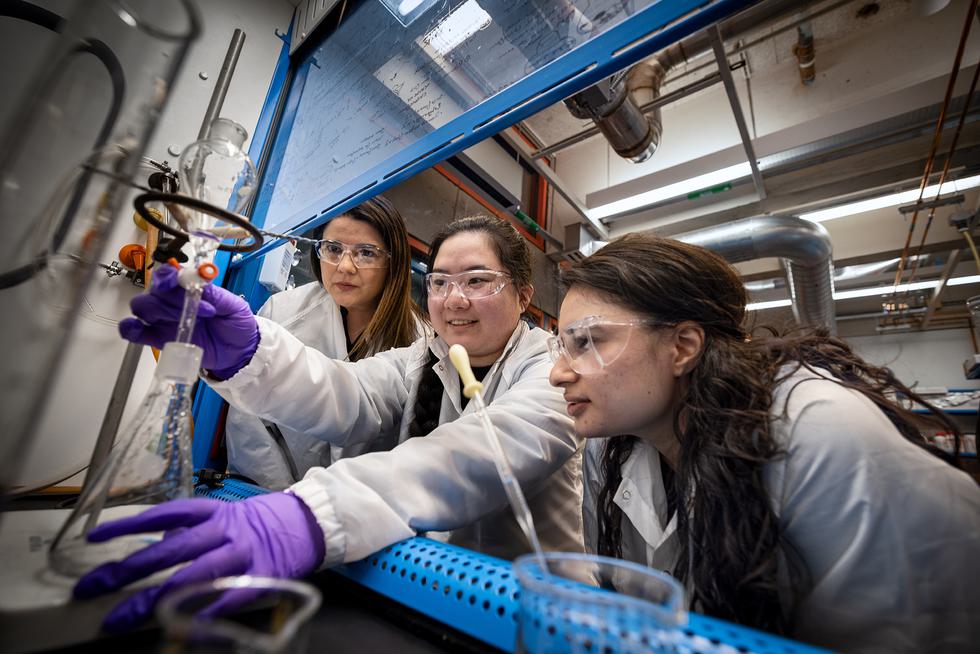
Ronghao Zhou ’17, Erika Kusaka ’19, Yin Wang ’16, Jing Zhang ’22, and Professor Dora Carrico-Moniz, in collaboration with Professor Andrew Webb, studied the mechanism by which a molecule discovered in the Carrico-Moniz lab halts the growth of pancreatic cancer cells. They published an article describing their research in 2022 in Anticancer Research.
-
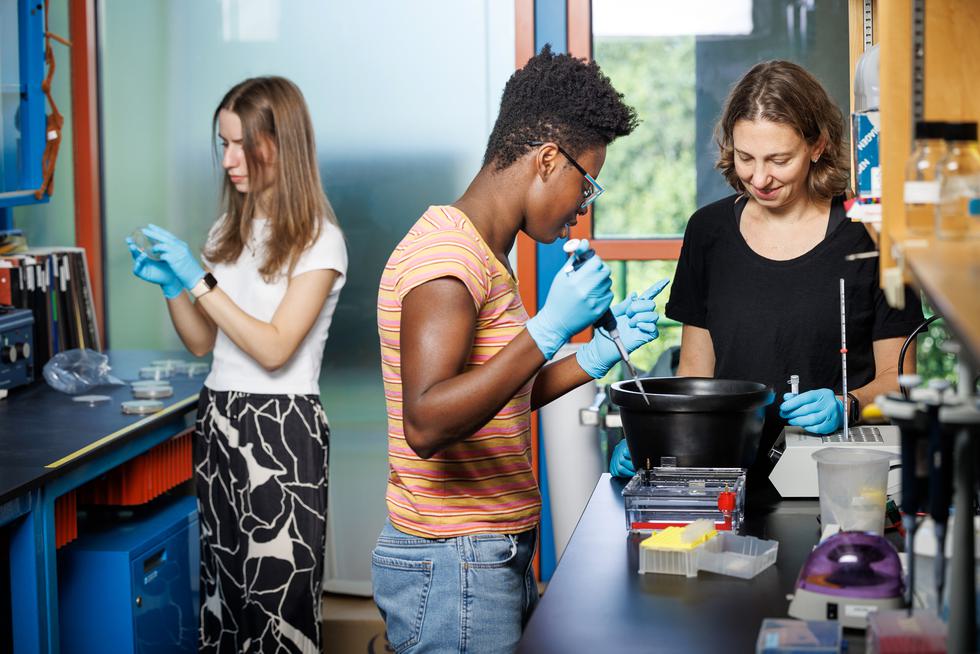
Medeea Popescu ’17, Yeon Lee ’15, Stephanie Kim ’18, Heidi Wade ’16, Amanda Papakyrikos ’14, and Professor Louise Darling researched potassium channels and their role in regulating the human heart. Their article was published in BBA Biomembranes in 2021.
-

Jivonsha Ffrench ’24, Jaime Tracewell ’23, and Professor Yui Suzuki compared the growth of wildtype larvae, coloration of black mutant larvae, and gene expression differences between larvae fed an artificial diet containing conventional wheat germ and one containing organic wheat germ. Their resulting article was published in Frontiers in Insect Science in 2021.
-
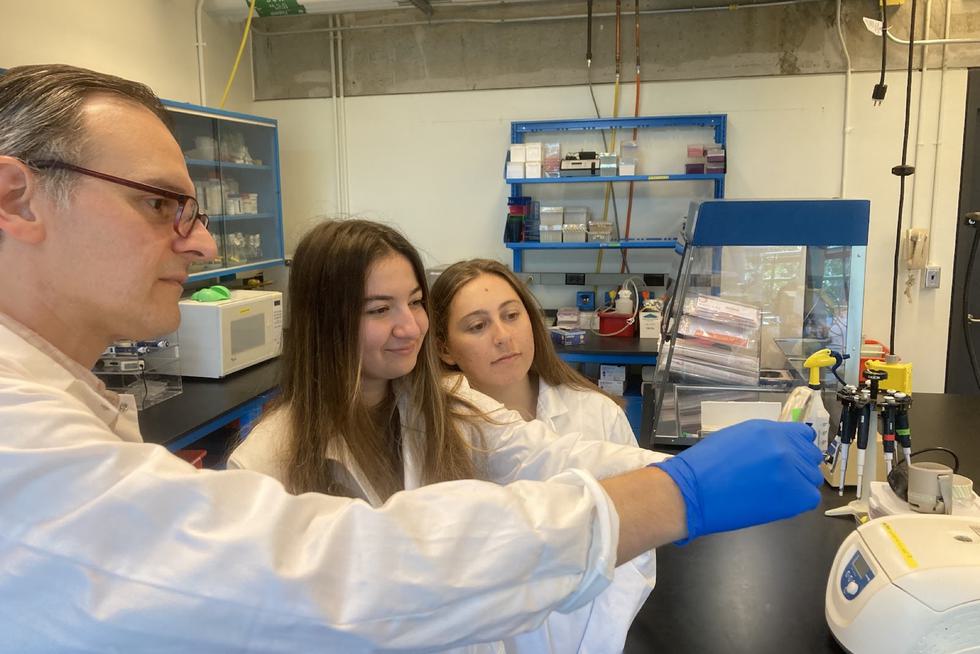
Ongoing collaboration between students in the labs of professors Mala Radhakrishnan and Don Elmore has focused on the computational design and experimental testing of more active antimicrobial peptides (AMPs). AMPs are potential therapeutic alternatives in the ongoing fight against increased bacterial resistance to conventional antibiotics.
-

Students working with Professor Mathew Tantama use techniques of protein engineering to develop genetically encoded biosensors. From single molecules to whole living cells, the biosensors are used to understand metabolism and signaling in models of neurodegeneration.
Opportunities
-
Research
Summer research is funded through the Science Center by competitive application in the spring semester. During the academic year, independent study is open to all students.
-
Biochemistry Research Week
Open to first-years and sophomores during Wintersession, the program provides an experiential introduction to laboratory research, taking a low-pressure approach that supports students with no scientific background.
-
Peer support
Majors and minors can earn stipends as embedded or attached tutors in courses, or helping in the Biology Cafe or Chemistry Cafe, where students drop in and ask questions.
-
Laboratory assistance
Majors and minors can serve as laboratory assistants, helping with instrumentation and answering students’ questions.
Beyond Wellesley
Beyond Wellesley
Beyond Wellesley Graduates go on to a variety of graduate and health professional schools or into public health, teaching, law, or business. Those wanting to enter the scientific workforce do so in biotechnology, bioengineering, pharmacology, or clinical chemistry.
Recent Employers






106 Central Street
Wellesley, MA 02481
